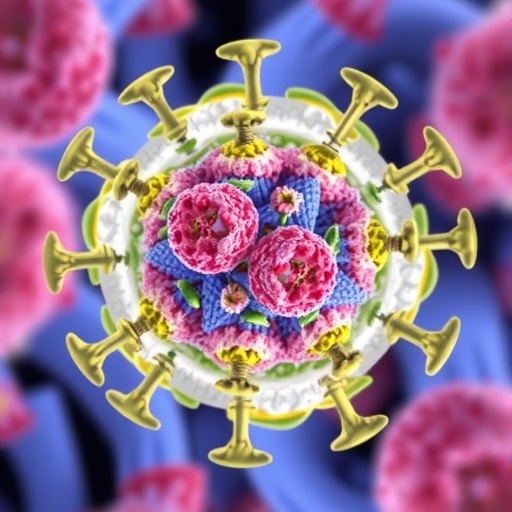
As climate change accelerates globally, its multifaceted repercussions extend far beyond melting glaciers and rising sea levels. In a groundbreaking observational study recently published in Frontiers in Public Health, researchers unveil an alarming connection between escalating ambient temperatures and the increased prevalence and lethality of women’s cancers across the Middle East and North Africa (MENA) region. This comprehensive investigation reveals how rising temperatures intricately influence the epidemiology of breast, ovarian, uterine, and cervical cancers, underscoring a hitherto underappreciated dimension of climate-induced health crises.
The MENA region, characterized by its arid climate and warming trends, has witnessed persistent increases in average temperatures over recent decades. Scientists have postulated that these climatic shifts do not exist in isolation but catalyze complex biological, environmental, and social changes that amplify cancer risk factors. The study meticulously charts data spanning 1998 to 2019 from seventeen countries, including Algeria, Egypt, Iran, Saudi Arabia, and others vulnerable to the compounded effects of heat stress and ecological degradation. By cross-referencing cancer incidence and mortality statistics with temperature fluctuations, the researchers identified a statistically significant correlation indicating that each degree Celsius increase corresponds with noteworthy rises in cancer diagnoses and fatalities among women.
Physiological vulnerabilities inherent to women are exacerbated in these settings, particularly in reproductive health contexts. Hormonal regulation, immune responses, and cellular mechanisms that govern oncogenesis are susceptible to thermal stress and associated environmental changes. Dr. Wafa Abuelkheir Mataria, leading the research team at the American University in Cairo, elaborates, “Our findings highlight how ovarian and breast cancer mortality demonstrably rise with temperature. Although measurable increases per degree are modest, their aggregated effects foreshadow a substantial public health challenge.” This nuanced perspective is critical; incremental shifts may seem minor at a glance but can translate into thousands of additional cancer cases and deaths over time.
Moreover, the cumulative environmental degradation that accompanies global warming compounds these risks. Deteriorating air quality laden with carcinogenic particulates, diminished water and food security, and increased prevalence of natural disasters disrupt healthcare infrastructure and amplify exposure to oncogenic agents. Especially within fragile health systems prevalent in many MENA countries, delays in early diagnosis and treatment exacerbate mortality. “Temperature rise acts via a constellation of pathways,” explains co-author Dr. Sungsoo Chun. “Not only does it heighten exposure to environmental carcinogens and hinder healthcare delivery, it may also disrupt molecular cellular processes—potentially accelerating tumorigenesis.”
The spatial heterogeneity of cancer trends across the MENA region reveals deeper complexities. Not all countries exhibited uniform increases. Elevated cancer prevalence and mortality rates linked to temperature rises were particularly pronounced in Qatar, Bahrain, Jordan, Saudi Arabia, the United Arab Emirates, and Syria. This variation suggests that localized environmental factors, urbanization levels, pollution profiles, and healthcare access disparities modulate vulnerability. For example, Qatar reported a breast cancer prevalence surge of approximately 560 cases per 100,000 women per degree Celsius increase—substantially higher than Bahrain’s 330 cases per 100,000. These discrepancies underscore the interplay between climate variables and socio-economic determinants influencing cancer epidemiology.
Technological advancements in cancer screening and diagnostics could partially account for increased reported prevalence. However, the study systematically counters the notion that improved surveillance alone explains these trends. Typically, enhanced early detection decreases mortality rates. The simultaneous rise in both incidence and death rates across the studied cancers signifies that increased exposure to causative factors, rather than solely diagnostic improvements, drives the upward trajectory. This distinction is paramount for public health strategists aiming to mitigate these emerging risks.
The intricate molecular biology linking thermal stress to carcinogenesis remains a challenging research frontier. Temperature elevations can induce oxidative stress, DNA damage, and inflammatory responses within cells—processes fundamental to cancer development. Heat stress also potentially disrupts endocrine function, particularly in hormone-sensitive tissues like the breasts and ovaries. Furthermore, rising temperatures can alter patterns of infectious agents such as human papillomavirus (HPV), a key driver of cervical cancer, by influencing viral persistence and transmission dynamics. Such biological mechanisms require further elucidation but form a biologically plausible framework connecting climate change to cancer increases.
Beyond biology, socio-economic and structural factors critically amplify vulnerabilities. Women, particularly marginalized populations, disproportionately face challenges in accessing healthcare, screening programs, and timely treatment due to systemic inequalities exacerbated by environmental stresses. Climate-induced disruptions to healthcare infrastructure—ranging from facility damages due to extreme weather to workforce shortages—further obstruct effective cancer management. Dr. Chun emphasizes, “Building climate-resilient health systems is imperative to buffer against these compound challenges and safeguard vulnerable populations.”
The researchers caution that their observational design cannot definitively establish causality, acknowledging that unmeasured confounders may partly influence the associations observed. However, the consistency of patterns across multiple countries and cancer types lends credence to climate change as a significant contributory factor. They advocate for intensified research integrating environmental science, molecular oncology, and health systems analysis to disentangle these complex interactions and guide tailored interventions.
From a policy perspective, this research signals an urgent call to integrate climate change considerations within cancer prevention and health planning frameworks. Investments in environmental regulations to curb air pollution, expansion of equitable cancer screening programs, and bolstering healthcare infrastructure adaptability are pivotal strategies. Public health practitioners must pivot to incorporate climate resilience, recognizing that temperature-related risks represent an emerging layer of cancer burden that cannot be overlooked.
As global temperatures inexorably rise, the intersection between environmental change and non-communicable diseases like cancer necessitates multidimensional responses. This study exemplifies how integrating climate data with epidemiologic surveillance can illuminate pathways for mitigating health adversities. It also highlights the imperative for regional collaborations within the MENA region to harmonize efforts addressing climate-sensitive health challenges.
In conclusion, the intersection of climate change and women’s cancer epidemiology in the MENA region represents a critical public health frontier. Incremental temperature increases, while seemingly modest, translate into significant elevations in cancer incidence and mortality. This complex interplay mandates urgent, coordinated action encompassing environmental protection, health system strengthening, and targeted cancer control initiatives. Only through such comprehensive strategies can the looming shadow of climate-aggravated cancers be diminished, safeguarding the health of millions of women in a warming world.
Subject of Research: People
Article Title: Climate Change and Women’s Cancer in the MENA Region: Assessing Temperature-Related Health Impacts
News Publication Date: 27-May-2025
Web References:
DOI: 10.3389/fpubh.2025.1529706
Keywords: Climate Change, Women’s Cancer, Middle East, North Africa, Breast Cancer, Ovarian Cancer, Cervical Cancer, Uterine Cancer, Environmental Health, Public Health, Temperature Rise, Cancer Mortality
Tags: breast cancer and climate changecancer mortality rates in Middle Eastcervical cancer epidemiology in arid climatesclimate change and cancer riskecological degradation and public healthenvironmental factors affecting cancer riskheat stress and women’s healthMENA region cancer statisticsobservational studies on climate impactovarian cancer and temperature increaserising temperatures and cancer prevalencewomen’s health and climate change





